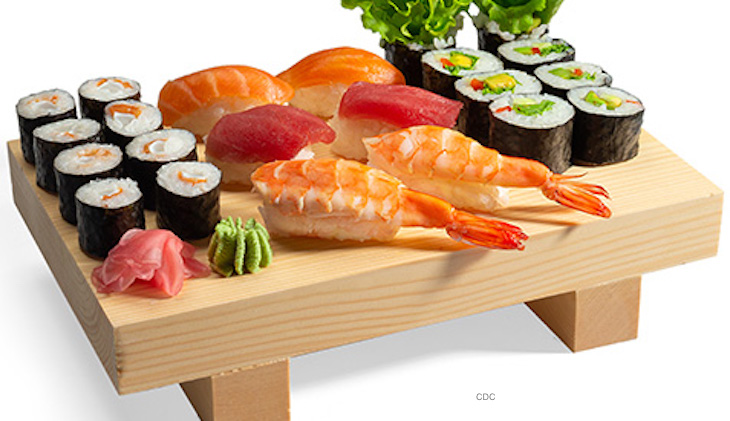More seafood is consumed in the summer months, especially raw oysters. Learn how to keep seafood safe with these tips. Consumer Reports is offering advice on the safe seafood preparation and care. Like all perishable foods, seafood must be handled carefully to avoid food borne illness.

If you choose to eat seafood raw, you must be especially careful. Sushi, ceviche, and raw oyster consumption has been linked to foodborne illness over the years. In fact, earlier this month a man from Missouri died after eating raw oysters contaminated with Vibrio vulnificus. Last year, raw oysters were linked to a sapovirus outbreak. And a Salmonella outbreak linked to raw oysters sickened at least eight people in Florida, Georgia, and Alabama. These foods can be contaminated with pathogenic bacteria, viruses, and parasites that can make you very sick.
Fin fish can contain parasites like roundworms, tapeworms, and intestinal flukes. They can cause nausea, abdominal pain, and diarrhea, and if they get into your heart or liver, they can damage those organs. For oysters and other bivalves, bacteria are the most common pathogens. These foods have also been contaminated with viruses, especially norovirus.
Anyone who is in a high risk group for serious complications from food poisoning should avoid eating raw seafood. That includes the elderly, the very young, anyone with a compromised immune system, and pregnant women.
You can reduce the risk of getting sick from eating raw seafood, but it’s impossible to completely eliminate the risk. Buying commercially frozen fish can help, since freezing below 0°F destroys parasites. Thaw the fish slowly, only in the refrigerator, use it immediately, and keep it cold.
Raw shellfish should have a tag that states when it was harvested. If there is no tag, the store should have the information. Only buy raw shellfish that has been harvested within the last week. Use the shellfish within two days.
If you eat at sushi restaurants, look up inspection reports and check out ratings and reviews. Some restaurants will provide placards to indicate their recent inspection results. Avoid any establishment without a top rating.
When you shop for seafood, never buy any that smells fishy. Raw fish should smell briny, like the sea. For whole fish, look for clear, shiny eyes. Frozen fish is generally a good buy, but do not buy any packages that have frost or ice crystals, which can mean the fish was thawed and refrozen.
Keep raw seafood away from other foods in your shopping cart. Buy it last, wrap it in a plastic bag, and go home immediately after you check out. Put the seafood into the freezer or refrigerator, again away from foods that are eaten uncooked.
Freeze raw seafood you don’t use within two days. The fish should keep its quality for six two eight months. If you bought frozen fish, do not thaw it and refreeze because that will affect quality.
Cooked fish should reach a final internal temperature of at least 145°F. Check that temperature with a reliable digital food thermometer. You can also check for doneness by testing the fish with a fork; the flesh should flake and separate easily. Cook crab, lobster, and shrimp until the flesh is opaque. Clams, mussels, and oysters should be cooked until they open. Discard any that stay closed after cooking (and discard any that will not close before they are cooked).
With these tips for buying, using, and storing safe seafood, you can minimize your fish for foodborne illness.




